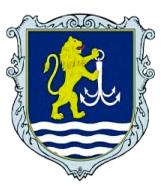CONTAINER TRANSPORTATION BY FERRY IN THE BLACK SEA AS PART OF THE TRANS-CASPIAN INTERNATIONAL TRANSPORT ROUTE
Abstract
Introduction. The container traffic between East Asia and the European Union is one of the largest in terms of volume. The large-scale Russian invasion of Ukraine has led to a decline in the popularity of the so-called “Northern Corridor” – a transport system connecting China with the EU countries, and has forced cargo owners to choose alternative delivery routes. The Trans-Caspian international transport route has again attracted attention as a multimodal route for delivering goods from China to the EU. This route, which passes through several Central Asian countries, is currently a potential alternative to the land logistics chain for transporting goods from China to the EU, which previously ran through the territory of Russia. One of the links of this route is the sea transportation of goods from the ports of Georgia/Turkey to the seaports of the eastern coast of the Black Sea. One option for such a route is a ferry connection between Georgian and Turkish ports with the port of Chornomorsk. Purpose. The purpose of the article is to review container cargo flows moving along the Trans-Caspian international transport route and analyze the prospects for using ferry transportation in the cargo delivery chain. Results. The analysis of transportation has proven that the Trans-Caspian international transport route represents a very promising scheme for Ukraine for the delivery of goods from China, as well as transit transportation between East Asia and the European Union. Despite the competition from the ports of Romania and Bulgaria, rail ferry transportation from Georgia to the port of Chornomorsk has certain advantages and development potential. Conclusions. Rail ferry transportation of containers in the direction of Batumi/Poti-Chornomorsk will allow the Ukrainian transport system to join the functioning of the Trans-Caspian international transport route and will transfer part of the container cargo flow between China and the EU through the territory of Ukraine. Despite this, this type of connection has certain disadvantages that require a more detailed comparison with traditional container transportation by feeder vessels.
Downloads
References
2. Л.В. Ширяєва, М.В. Шагіна. Аналіз можливостей використання залізничних поромів СК «Укрфері» для перевезення контейнерів. Розвиток методів управління та господарювання на транспорті. Одеса, 2017. №1 (58). С. 75-89.
3. Офіційний веб-сайт Middle Corridor – TITR. URL: https://middlecorridor.com/en/about-the-association/history-en (дата звернення: 17.01.25).
4. Економічна і соціальна рада ООН. Progress update on the operational capacity of the TransCaspian and Almaty-Istanbul Corridors. 2022. URL: https://unece.org/sites/default/files/2022-08/ECE-TRANSWP5-2022-01e.pdf (дата звернення: 17.01.25).
5. Медеубаєва Ж., Таштемханова Р., Тугаєв А. Транскаспійський міжнародний транспортний маршрут: нові можливості для діалогу та співпраці. Геополітика України: історія і сучасність. Ужгород, 2023. № 1(30). С. 78–86. URL: https://doi.org/10.24144/2078-1431.2023.1(30).78-86 (дата звернення: 17.01.2025).
6. The TITR Working Group meeting held in Tbilisi. Офіційний веб-сайт Middle Corridor – TITR. 2024. URL: https://middlecorridor.com/en/presscenter/news/the-titr-working-group-meeting-held-in-tbilisi (дата звернення: 17.01.2025).
7. Міжнародний банк реконструкції та розвитку/Група Світового банку. Middle trade and transport corridor. 2023. URL: https://thedocs.worldbank.org/en/doc/6248f697aed4be0f770d319dcaa4ca52-0080062023/original/Middle-Trade-and-Transport-Corridor-World-Bank-FINAL.pdf (дата звернення: 17.01.2025).
8. Державна служба статистики України. Географічна структура зовнішньої торгівлі України товарами в січні-жовтні 2024 року. URL: https://www.ukrstat.gov.ua/operativ/operativ2024/zd/ztt/ztt1024_ue.xls (дата звернення: 17.01.2025).
9. Національний інститут стратегічних досліджень. Міжнародні транспортні проекти як стратегічний чинник розвитку залізничного транспорту. 2024. URL: https://niss.gov.ua/doslidzhennya/ekonomika/mizhnarodni-transportni-proekty-yak-stratehichnyy-chynnyk-rozvytku (дата звернення: 17.01.2025).
10. Пороми судноплавної компанії «Укрферрі». URL: https://www.ukrferry.com/uk/ships (дата звернення: 17.01.2025).
11. "Укрзалізниця" позбудеться своїх поромів. Центр транспортних стратегій. 2024. URL: https://cfts.org.ua/news/2024/07/04/ukrzaliznitsya_pozbudetsya_svokh_poromiv_79691 (дата звернення: 17.01.2025).
12. Мельник М.І., Лещух І.В. Розвиток інфраструктури мультимодальних перевезень в Україні у контексті зміни транспортно-логістичних маршрутів в умовах війни: наукова доповідь / ДУ «Інститут регіональних досліджень імені М.І. Долішнього НАН України». Львів, 2023. 51 с. (Серія «Проблеми регіонального розвитку»).





